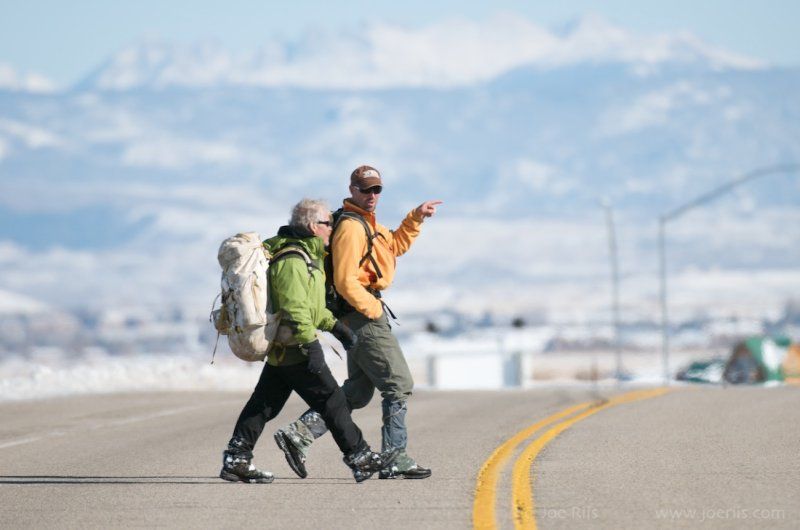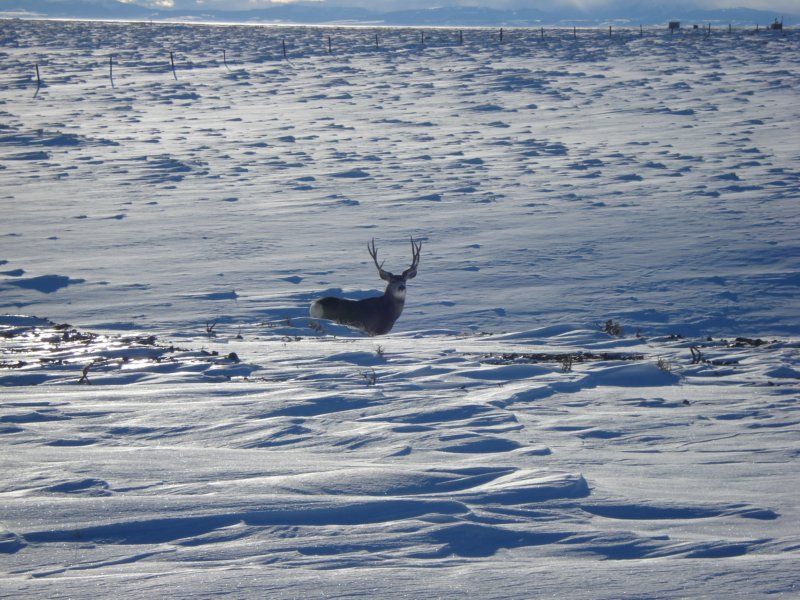Increased levels of energy development across the Intermountain West have created a variety of wildlife management and conservation concerns. Because many of the energy resources in the region occur in shrub-dominated basins, management concerns have focused on native shrub communities and associated species, including mule deer. Two of the more pressing concerns are how mule deer respond when critical habitats (e.g., winter range) are impacted by development and how their migration routes can be identified and prioritized for conservation.
To address the first, we examined how three types of natural gas well pads with varying levels of vehicle traffic influenced the winter habitat selection patterns of mule deer in western Wyoming. Our results showed that mule deer avoided all types of well pads and selected areas further from well pads that received high levels of traffic. Accordingly, impacts to mule deer could likely be reduced through technology and planning that minimizes the number of well pads and amount of human activity associated with them. To address the migration concerns, we developed a quantitative framework that uses global positioning system (GPS) data and the Brownian bridge movement model (BBMM) to: 1) provide a probabilistic estimate of the migration routes of a sampled population, 2) distinguish between route segments that function as stopover sites versus those used primarily as movement corridors, and 3) prioritize routes for conservation based upon the proportion of the sampled population that uses them. Mule deer migration routes were characterized by a series of stopover sites where deer spent most of their time, connected by movement corridors through which deer moved quickly. These findings suggest management strategies that differentiate between stopover sites and movement corridors may be warranted. Because some migration routes were used by more mule deer than others, proportional level of use may provide a metric by which routes can be prioritized for conservation.
Publications
Project Publications
Sawyer, H.S., M.J. Kauffman. 2011. Stopover ecology of a migratory ungulate. Journal of Animal Ecology 80:1078-1087. View Online
Sawyer, H., M. J. Kauffman, R. M. Nielson, and J. S. Horne. 2009. Identifying and prioritizing ungulate migration routes for landscape-level conservation. Ecological Applications 19:2016-2025. View PDF
Sawyer, H., M. J. Kauffman, and R. M. Nielson. 2009. Influence of well pad activity on the winter habitat selection patterns of mule deer. Journal of Wildlife Management 73:1052-1061. View PDF
Project Reports
Sawyer and Kauffman. 2009. Identifying mule deer migration routes to and from the Pinedale Anticline Project Area. View PDF
Sawyer and Kauffman. 2008. Identifying mule deer migration routes in the Atlantic Rim Project Area. View PDF
Sawyer and Kauffman. 2008. Identifying mule deer migration routes along the Pinedale Front. View PDF
Contact
Hall Sawyer, Ph.D.
Western Ecosystems Technology (WEST), Inc.
200 South 2nd Street, Suite B
Laramie, WY 82070
307-755-0401
hsawyer@west-inc.com
Project Lead
Hall Sawyer: Hall is a research biologist and project manager with Western Ecosystems Technology, Inc. (WEST). Hall earned a B.S. degree in wildlife biology from Colorado State University and M.S. and Ph.D. degrees in Zoology from the University of Wyoming. MORE »

Funding & Partners
Wyoming Wildlife & Natural Resource Trust · University of Wyoming, School of Energy Resources · Bureau of Land Management · Wyoming Conservation Landscape Initiative · Wyoming Game & Fish Department · Wildlife Heritage Foundation of Wyoming




